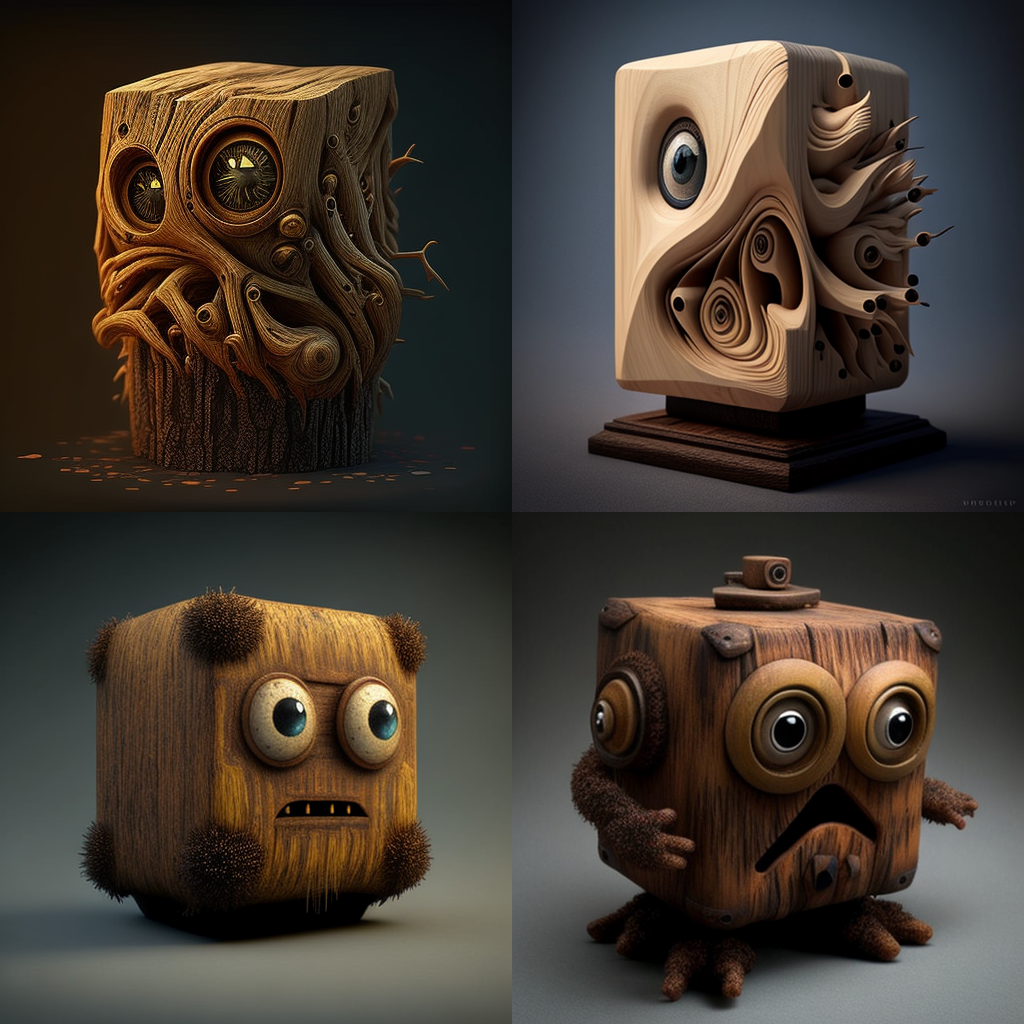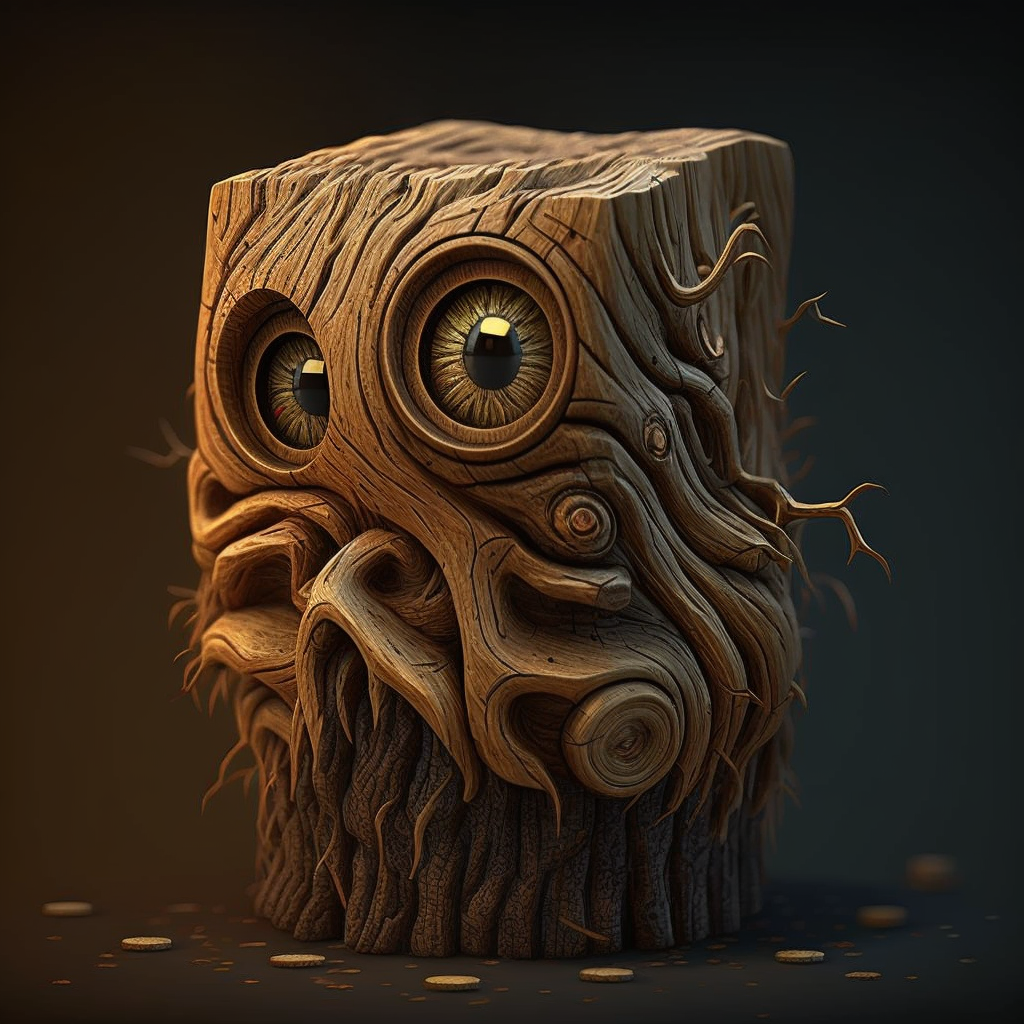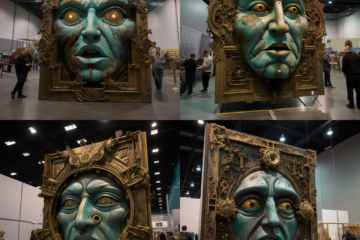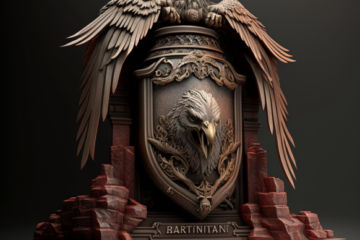This is the 6th AI Artifact, a magic item based on an image generated by an AI from randomly generated words. In this case, those words are “symptomatic”, “sulky”, and “fuzzy”. If you want to know what this is about, you can find the rules here.
I will say, the term “fuzzy” had some interesting consequences, up to the point that I did something unprecedented, which I hope you will forgive me for.
The prompt(s) used
As usual, it took more than one attempt to get something that spoke to me. I don’t know at what point this becomes more curated than random. But there is still a lot of weirdness coming in from the image-creating AI Midjourney in order to generate these pictures. Here are the images that did not work, each with the prompt used in the captions.
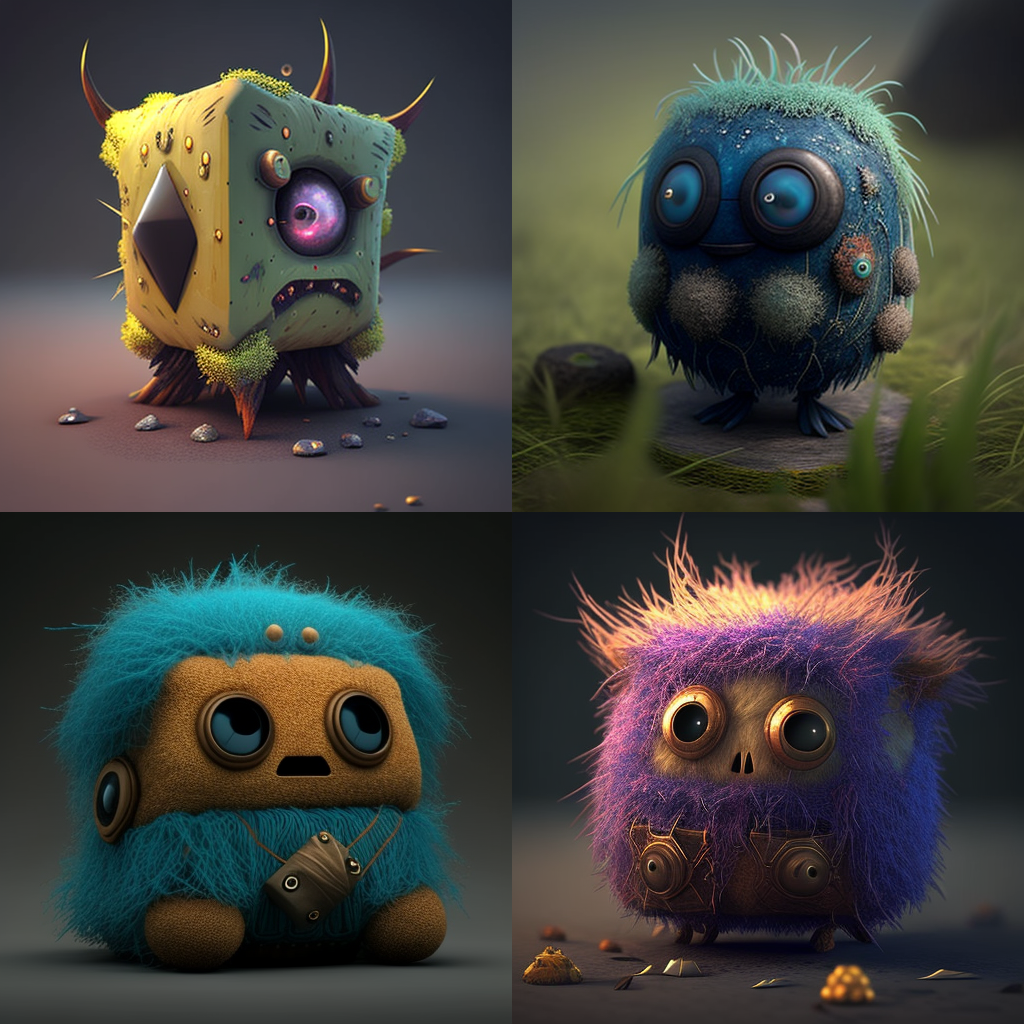
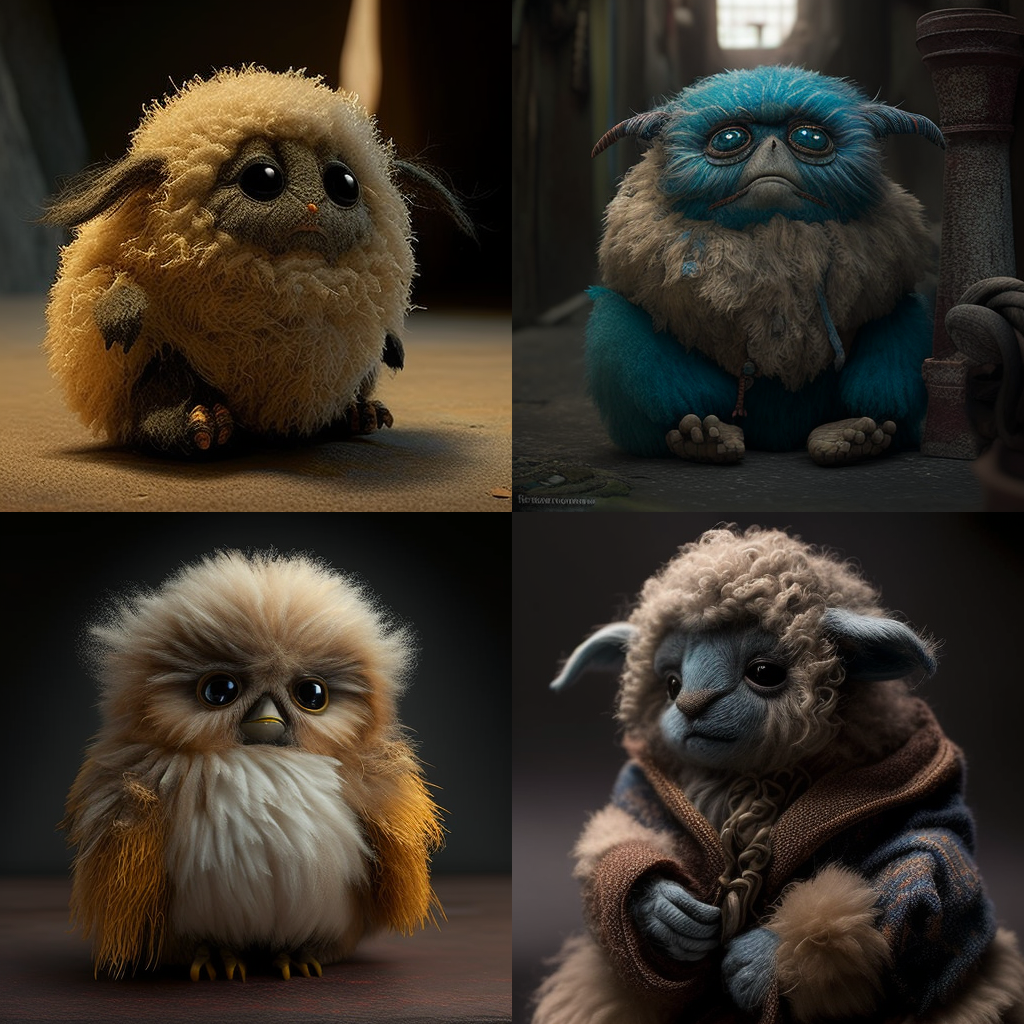
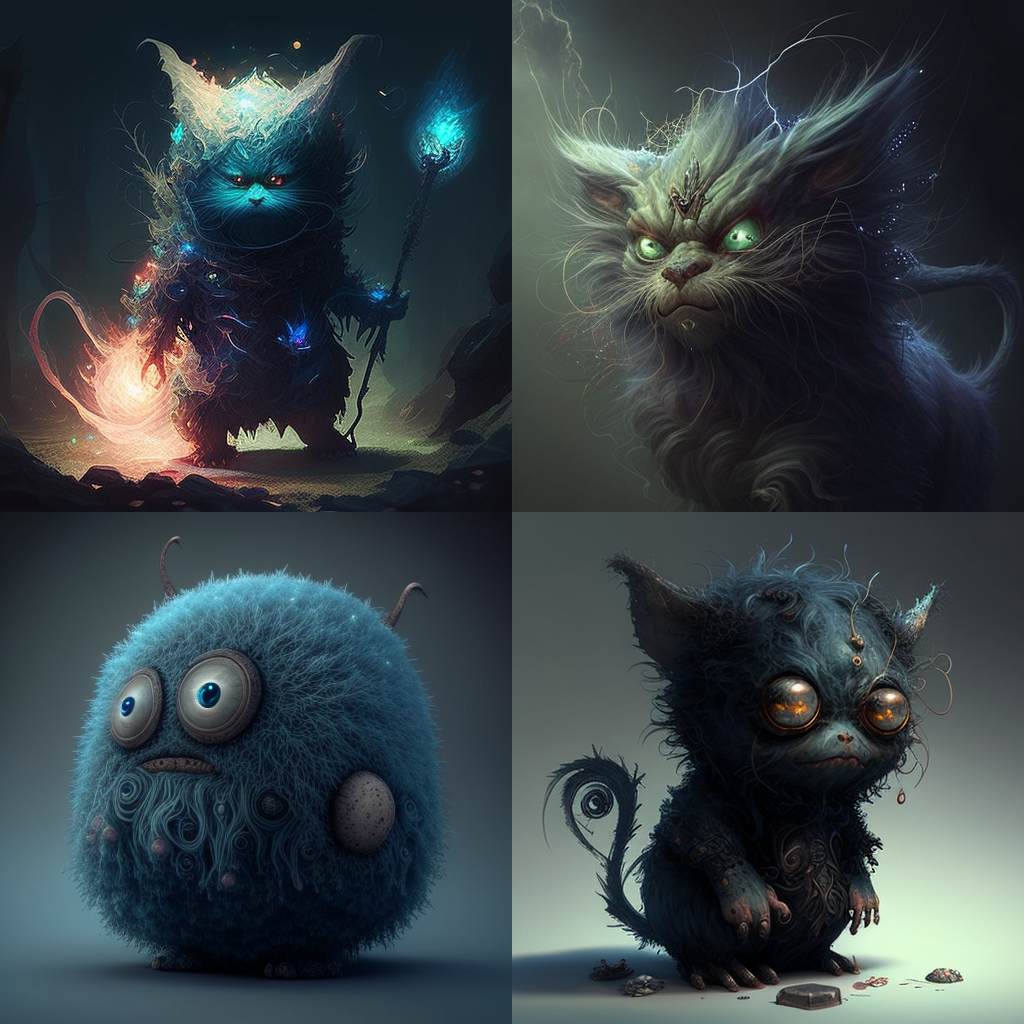

While there are some cute ones in there, I decided to go against the grain (*cough*) and add a material to the prompt. Spoiler warning, the rightmost one is a variation on the one that actually provided the chosen image.

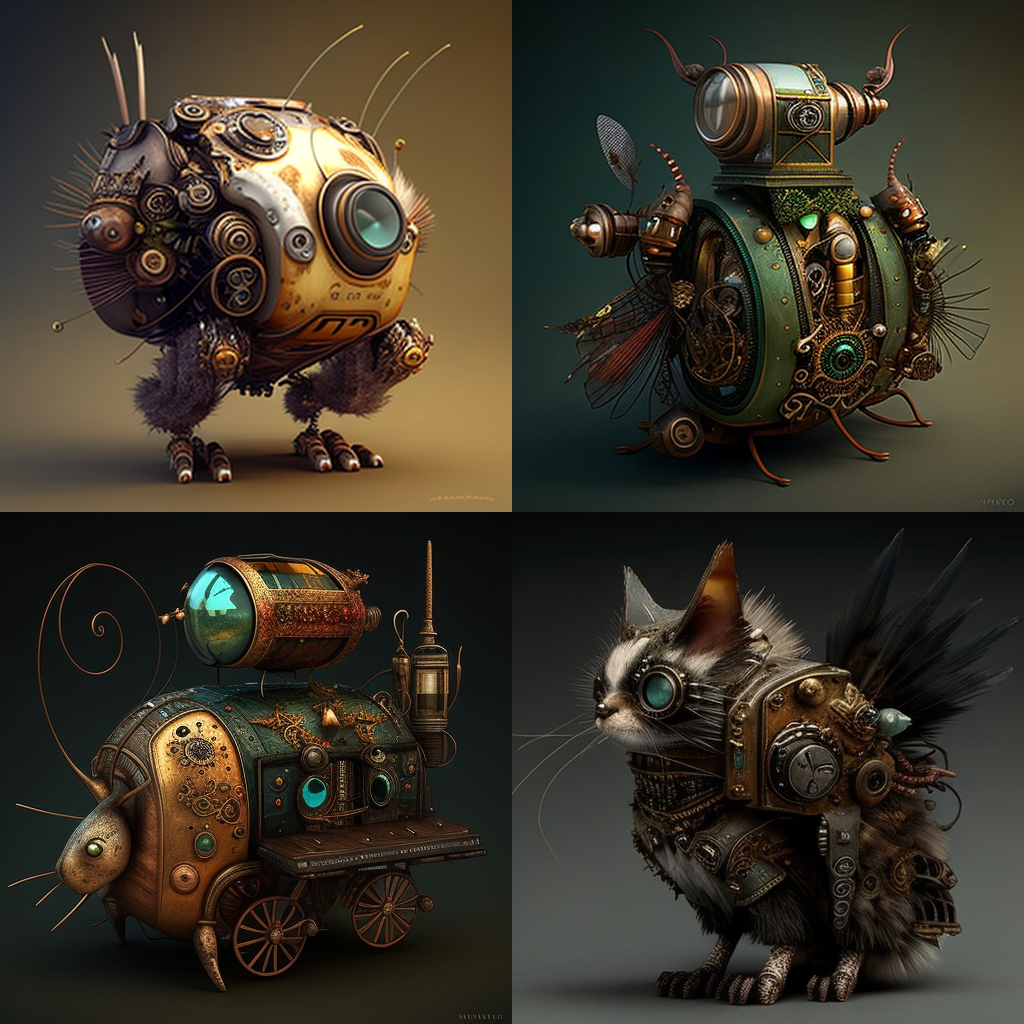

The Image – symptomatic, sulky, fuzzy
And here is what Midjourney (and I) came up with:
Top right looks like a modern art experiment and would make a cool PC case. Bottom left is weird but also a little boring. Bottom right would work for some kind of automaton, but not a magic item. So that leaves us with only one option, scaled up, with added details this time:
So, the question becomes, what is symptomatic, sulky, and fuzzy? Glad you asked.
The Artisanal Tree Spirit
“That’s the spirit!” It’s something people say when they mean that someone is doing something right. But it is also true in another sense – everything has a spirit. At least in nature. Most animals do, except for the really antisocial ones, and every plant does, as well. It is a good thing that they do not have eyes in the common interpretation of the term, because that would make walking through a forest even more creepy.
Once, a mighty tree, their exact species lost to time, fell in a storm. While everyone was busy repairing their homes and the town’s infrastructure, one alchemist, descendant of druids, chose to help that tree. Science and guesswork flowed into this item in equal measure, only topped by good intentions.
You see, spirits of an object inhabit the whole object. As such, they can shatter and break, which is an unpleasant and usually fatal experience even for a spirit. Those that inhabit living things are less fragile. They get to stick around longer, as long as “life” persists. At her abode, the alchemist nourished the tree with elixirs while also chipping away at the wood.
While it seemed counter-intuitive at first, this was the only way to keep the tree spirit alive. As it weakened, it could not fill the whole tree. As the alchemist carved away material, the spirit could retain its strength by occupying less space. That, combined with the carefully brewed potions to keep the wood alive, finally lead to a balance point.
At a somewhat handheld size, the spirit could sustain itself, and after some experimentation, carving the semblance of a root system allowed it to gain strength back for some obscure reason. Over time, the spirit even formed eyes in order to perceive the world, considering that nobody would mistake it for a tree anymore, anyway.
Good Natured
As a grateful entity, the spirit is willing to use its powers to help others, preferably to support nature and the natural order in general. To that end, it can gather its strength and use it to affect a change in its surroundings. This change is temporary, but can bring relief or boon to the region. If someone is willing to make a sacrifice – usually in terms of life force – this change can be made permanent.
The being draws energy from its surroundings constantly. As such, it needs to give back every now and then in order to avoid overcharging. This causes a random thing to happen close to it, that may or may not be beneficial to the environment. This may also lead to the rediscovery of the artifact should it ever be lost.
A Choppy Road (Behind the Scenes)
The idea of random bursts of nature came early in the process, but it took me a while to “nail it down”. I started out with a behemoth of a single table that was actually a number of tables mixed together (one dice for the columns (biomes), one for the rows, and no way to make it into something easily readable here). I then decided to split these tables – one per column – to make things easier, only to realize that I hit another problem.
There was, to my mind at least, no way to fill 8 tables with distinct events that pertained only to a single biome. And repeating things several times over – prime example being a spring popping up, which would basically work everywhere not frozen, and even then might be interesting – would feel clunky and redundant.
In a last minute epiphany, I also decided to mentally dislodge the “biome” table from the current location of the item. The burst will be themed accordingly, with no relation to the biome the artisanal tree spirit currently resides in. Which makes so much sense that I was beginning to doubt myself got a minute there.
So here we go, “new and improved”, despite you never seeing the “old and depraved” version of
Random Bursts of Nature
These tables work to provide a random change near the Artisanal Tree Spirit. It is possible to negotiate with it for a certain outcome, and the Artisanal Tree Spirit is more than willing to oblige if the request is benign and at all possible. In return, it will take a measure of spirit and some faith in nature as sufficient payment.
The truly random bursts happen every 1d6 days within a a few meters of the object. Since nature is complex, and the artifact can be found in all manner of environments (including some where nature has a hard time manifesting), you need to support these random tables with a dash of your own inspiration and interpretation. But following them “as written” can be interesting, too!
| d10 | Biome |
|---|---|
| 01 | Forest |
| 02 | Savannah |
| 03 | Desert |
| 04 | Arctic |
| 05 | Tundra |
| 06 | Jungle |
| 07 | Swamp |
| 08 | Cave |
| 09 | Abundant Nature* |
| 10 | Wasting Nature* |
| d8 | Burst |
|---|---|
| 01 | A spring bursts from the ground, producing a modest flow of water for a few days. |
| 02 | A tree suddenly grows within seconds as much as it would in several months. If there is no tree, one will be provided for you (i.e. appear). |
| 03 | Creeping plants appear and grow within seconds as much as they would in several weeks, seeking to find sunlight. |
| 04 | Thick fog fills the vicinity and hangs around for a couple of hours, flowing as fog does. |
| 05 | Tiny clouds form and unleash modest precipitation on the vicinity. |
| 06 | A gentle breeze fills the area with natural smells for a couple of hours. |
| 07 | Light fills the area, as if filtered through vegetation or atmosphere. |
| 08 | A landmark is created within the area, no larger than a couple of steps in each dimension. |
*These terms stand in for realms with an overabundance of nature and a dark twist on nature, respectively. Some roleplaying settings have dedicated planes of existence for those, but you can also combine them – if they come up, roll again to find out which “standard” biome is abundant or wasting.
Corruption Awaits
I don’t know what corrupted my mind to make me think that the region the artifact is in should influence the kinds of bursts that it produces. But as a follow-up, maybe despite all the efforts of the alchemist of old, the artisanal tree spirit has been somewhat corrupted, too?
Either the process was flawed, twisting the benign entity inside into a somewhat shady direction. Or the craft and skill that went into creating a tiny house for a nature spirit also made it susceptible to the influence of other spiritual entities of less friendly disposition.
If this was to happen, the outbursts would not change much, but take on a mean streak. Instead of at random, they would appear where they would be most disruptive in the vicinity. Instead of merely existing and chilling, living things that are part of the effect would be hostile and possibly hunting for prey.
Cure the Corruption
If for an reason you seek to remedy the corrupted state that the tree spirit might be in, there are a couple of ways to go about it:
- Cure the spirit inside the Artifact by applying a druidic ritual (requiring the help of a powerful druid) or a potion (requiring rare ingredients)
- Draw out the usurping spirit by visiting a holy or blessed location (with travel), conducting a ritual (that is more on the divine side), or providing it with an (apparently) better dwelling.
- Negotiate with the being about what it is they actually want. They might not be evil, but instead crave a change of scenery, some kind of sustenance, or outright release.
- As a last-ditch option, you could try and destroy the artifact, which should be hard and require methods similar to the above (travel, ritual, knowledge). This would probably include fighting the evil spirit once released.
Keep in mind that the malevolent aspect of the artifact might also fight back along the way, depending on whether they are present and aware of the circumstance.
Do you feel more symptomatic already?
This was an interesting item to work on. But then again, I say that to all the items. I found it especially fascinating to see the impact the word “fuzzy” had, and how hard it was to produce something without eyes and fur. Did you notice the cute animals encased in the crystalline versions?
If you enjoyed this, please help me out by joining my Discord server and giving me feedback on this (and all other) post(s)! I am still trying to build a community there, and every little bit helps! Also check out the other AI Artifacts, and the Make AI Reality series on my other site.
Thanks for stopping by, and remember to Be Inspired!
